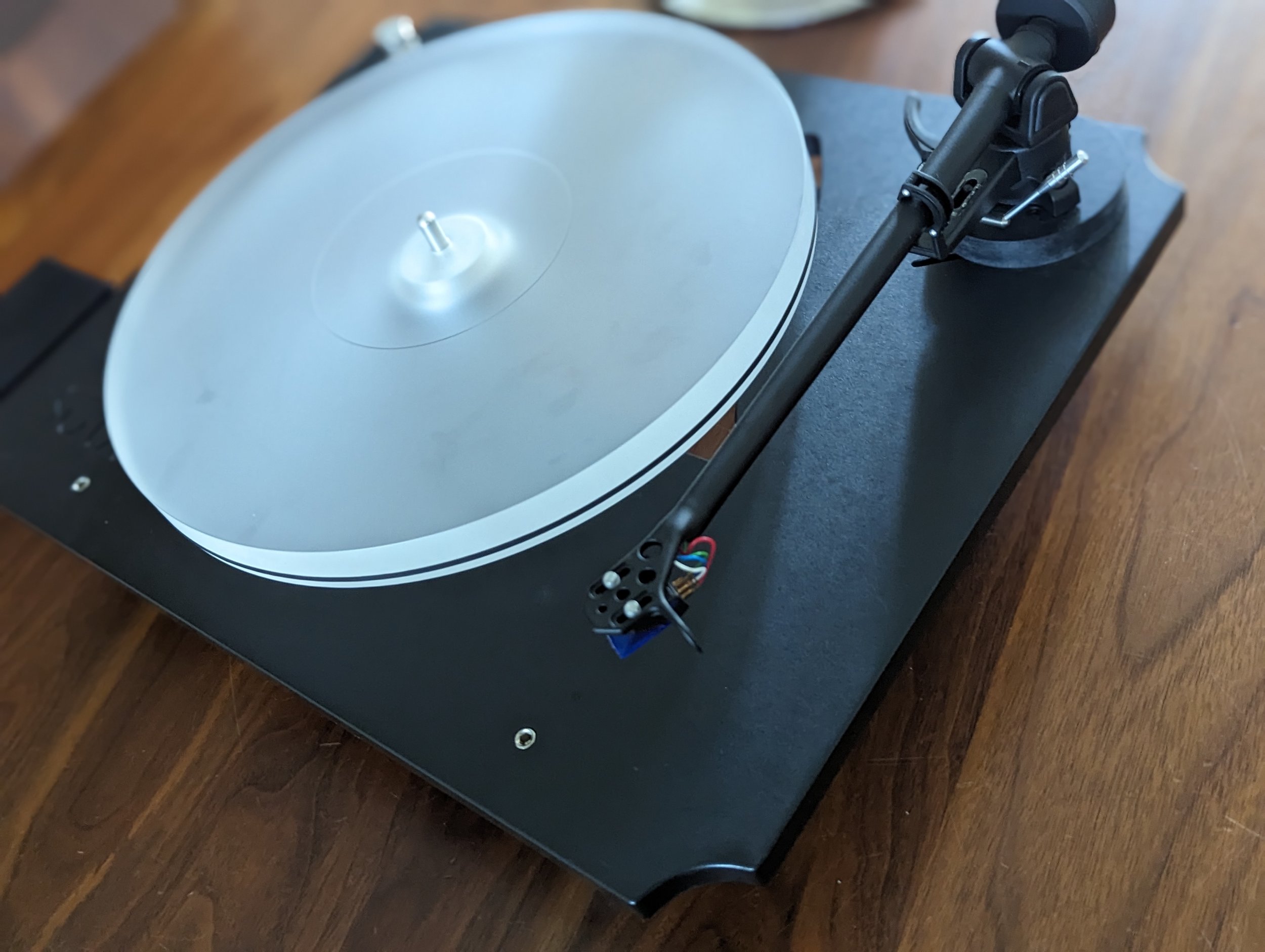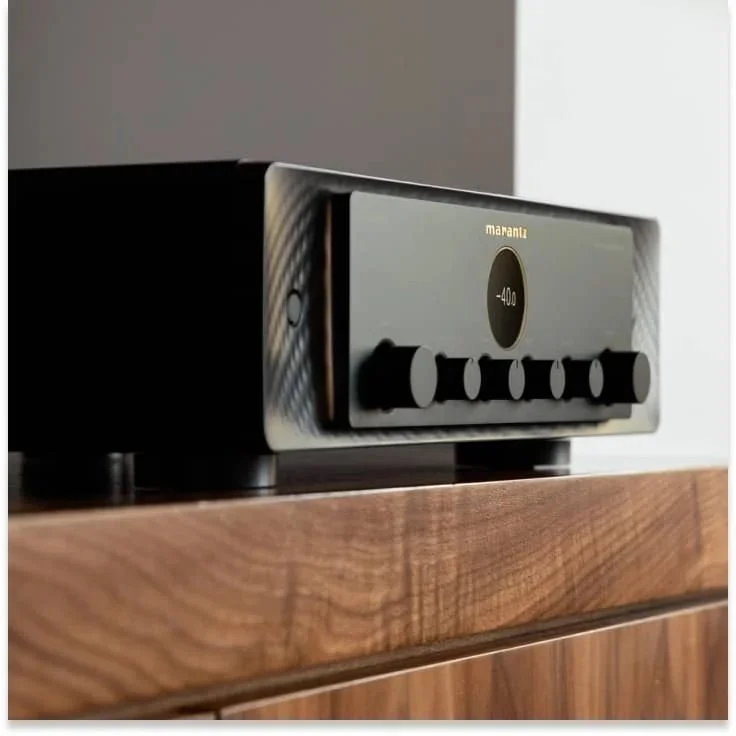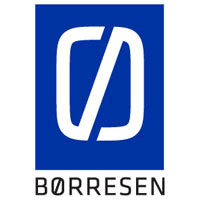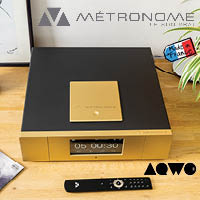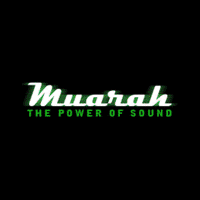Sota Escape Turntable
My exploration of analog offerings from boutique Wisconsin-based manufacturer Sota continues here with the Escape Turntable. If you missed part one, feel free to check out my recent review of the Pyxi Phonostage. The Escape Turntable, which has a base price of $1900, is one of the newest and most interesting models in the Sota lineup.
Even within the diverse landscape of turntable brands Sota Sound Inventions, as they are formally known, has carved a unique niche. Sota’s core expertise is centred on manufacturing turntables themselves. And by manufacturing I don't mean just assembly, I mean actual manufacturing: raw materials coming in and finished goods going out. Sota builds platforms which customers can customize to create a lifelong audio companion.
There’s also a fascinating musical connection behind Sota’s manufacturing operations. Many years ago Sota formed a partnership with Griego Mouthpieces, a manufacturer of mouthpieces and other equipment for brass instruments. Sota and Griego Mouthpieces share a facility, manufacturing expertise, and of course passionate dedication to music.
The $1900 Escape resides in the middle of Sota’s Urban Series and while it is nominally their entry-level line, it's a different product and experience than ordering an entry-level audiophile table from mainstream makers. That doesn’t diminish the quality and importance of the many entry-level audiophile tables available in the sub $1000 range. Those products are shaping the audiophile market landscape by bringing a taste of the high end to the masses and many of those owners will one day aspire to another level of analog paradise. At Sota, turntables are more a la carte, with choices of tone arms, cartridges and electronic upgrades. Customers needing product guidance can pick up the phone, have a chat with the Sota team and discuss their needs to get a personalized recommendation. The company also offers lifelong trade-ins, repairs and upgrades.
Features & Specs
The Escape is highly customizable and the particular ‘table loaned to me for review was configured at the factory with the “standard” Rega RB220 tonearm and Ortofon 2M Blue cartridge combination. Tonearms from Origin Live and moving coil cartridges from Hana are also available.
Pre-installed on the review model was the Roadrunner tachometer system, a $525 upgrade. The Roadrunner technology, licensed from Phoenix Engineering, works just like cruise control for the platter: a postage-stamp-sized sensor mounted under the platter on the back of the plinth tracks a tiny magnet attached to the underside of the platter to precisely monitor the speed. Real-time adjustments are made via a direct connection from the Roadrunner controller to the Condor power supply. This is a standout option to have available for a turntable in this price segment.
Photo credit: Max Geiger
Other features include a one-inch thick brushed acrylic platter (a beefier 1 ½-inch platter is available for a $100 upcharge) which rests on a sapphire bearing. The Escape appears to be the least expensive Sota turntable to feature a sapphire bearing.
Finally, the feature which differentiates the Escape from the rest of the Sota lineup is the phenolic resin plinth which was chosen for its anti-resonant properties.
Design & Build
Quite the contrast from traditionally styled, hardwood-clad models in Sota’s lineup, the Escape is classic looking without a vintage aesthetic. Simplicity and modularity are the design principles here. There are no hidden parts as there is no “interior”—all running gear is mounted directly onto the heavy slab of phenolic resin.
The smooth acrylic platter and polished conical feet add a hint of refinement to the simple style. Upon close inspection, the heavy phenolic resin plinth brings some high-end gravitas relative to the painted MDF plinths of the competition. It’s easy on the eyes with no flashy coatings or blingy appliques. A tasteful, embossed “Sota'' on the front left corner of the plinth is the only maker's mark.
After using the Escape, having my hands on it, and taking a closer look at the components I started to appreciate the care that went into its construction. Through my day job, I am familiar with a couple of manufactured commodities that are relevant to turntable design: engineered sapphire and precision motors. Inspecting the Escape’s motor, I noticed it is manufactured in California by a company that supplies motion control products for applications such as robotics and medical devices. I was able to estimate the cost of this motor and can safely say it’s beyond anything that would be found in an entry-level belt drive table. The same can be said of just about anything made of sapphire. Most entry-level turntables use a Teflon-based bearing system at a small fraction of the cost of sapphire.
Daily Use & Setup
It seems all but the most exotic high-end turntables are plug-and-play these days. Setting up the Escape requires a few steps but nothing intimidating, especially with a cartridge preinstalled. After unpacking, installing the feet, gently lowering the platter into place, attaching the belt and connecting the electronics are required to start spinning.
I received a couple of recommendations for operation directly from Donna Bodinet, one of Sota’s owners. First, records should be placed directly on the acrylic platter. A mat would create a softer surface resulting in a loss of musical detail. A record weight is also recommended to double down on that concept of firmly coupling the record to the platter.
Review System
As with my review of the Sota Pyxi phono stage I used the Musical Fidelity M3si integrated amplifier and Canton Vento 20 speakers which make for a revealing combination. More on the M3si in an upcoming review. For reference, I used my Pro-ject Debut Carbon with Ortofon 2M Red cartridge. Reviewing the Escape with a factory installed 2M Blue made it easy to swap styli with my Pro-ject to get a feel for the relative contributions of the cartridge versus ‘table to the overall system sound. Reference phono stages were the Sota Pyxi or iFi Zen Phono and cables were Audio Art Classic Series.
Photo credit: Max Geiger
Listening
I typically enjoy an increased level of involvement with analog listening versus digital. With the Escape in my system, I experienced a massive step change in musical involvement—from engaged to fully immersed. This impact was most memorable when I received the recent Original Jazz Classics reissue of Waltz for Debby by the Bill Evans Trio (Craft Recordings, 2023). Even the early listening sessions with the Escape didn’t prepare me for the first needle drop on Waltz for Debby. Sure this is a killer reissue that sounds great on my Pro-ject. But wow, the potential in those grooves waiting to be realized… the space, the tone, the realism! The scene in the Village Vanguard basement was palpable. Bill Evans’ telepathy on the keys was profound. Scott LaFaro’s bass was plump and complete and I could feel Paul Motian’s cymbals shimmering in my room.
For a more challenging listen I dusted off my Classic Records 200-gram reissue of Genesis Live (2001, originally Charisma, 1973). It’s an audiophile pressing to be sure but it’s a recording I could never wrap my head around. Vocal levels are all over the place, sometimes the soundstage seems oddly small among other quibbles. I hadn’t ever fully connected with it, despite loving all the songs in the set. Even though it’s not an instant-goosebumps type of record like Waltz for Debby, the musical insight of the Escape helped me rediscover Genesis Live. The sound stage was better defined, realism improved and the dynamic explosions of the band rocking out were no longer veiled but appropriately crisp and heart-pounding. What started as a decidedly analytical listen morphed into a thoroughly engaging session.
So what did the Roadrunner do? First, a funny admission from a reviewer of HiFi equipment: my ears are not sensitive to pitch. If I sat down for a listen and my table was spinning at 34 rpm I might not even notice everything was sharp. What I would notice, though, are differences in the spatial presentation. In practice, a well-designed turntable won't run consistently fast or consistently slow but rather exhibit tiny variations from the set speed in either direction. Based on my experience with the Roadrunner in and out of the system, improving the speed stability did have an impact on the spatial aspect of the music. Playing Shrines by electronic duo Purity Ring (4AD, 2012) I discovered new details that were revealed by the deeper black backgrounds when using the Roadrunner. This album is full of fun samples, including some that sound like recordings being played backwards. The odd “vacuum” effect of sounds being played in reverse tickles my brain and the added clarity helped bring these effects forward where they were previously buried in the mix. This made for a fun listen.
In general, the Roadrunner is a cool upgrade. My recommendation would be to decide on a cartridge first to dial in the overall flavour of the system. Once that is settled, drive it home with the Roadrunner.
Beyond gathering musical impressions, I pondered the typical use case for the Escape Turntable. Given its boutique manufacturer, customizability and substantial (but reasonable) price it is likely to be an upgrade rather than a first turntable for many customers. General differences in performance relative to an entry-level audiophile table are informative in this context. Jumping from my Pro-ject Debut Carbon to the Sota I learned the Escape’s price is not close to the analog point of diminishing returns. The Escape costs more and offers more even with the default 2M Blue cartridge. In musical terms, a more extensive, cleaner, more insightful presentation is assured. Just as important, especially with a component as tactile as a turntable, the design, robust construction and pride of ownership are commensurate with the jump in price over an entry-level table.
Conclusion
The clean aesthetic and modest footprint of the Sota Escape turntable belies its high-end materials and carefully considered design. This turntable, unique even within the Sota lineup, offers a massive upgrade in sonic performance over an entry-level audiophile turntable. Essentially the $1900 Escape combines a “buy it for life” sound with a “buy it for life” ownership experience. I can confidently send the Escape off with a Star Component Award. Don’t be surprised if it reappears in our year-end issue as well.
Further information: Sota Turntables



